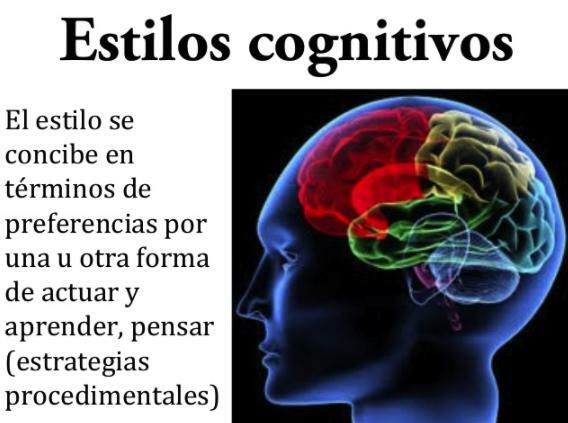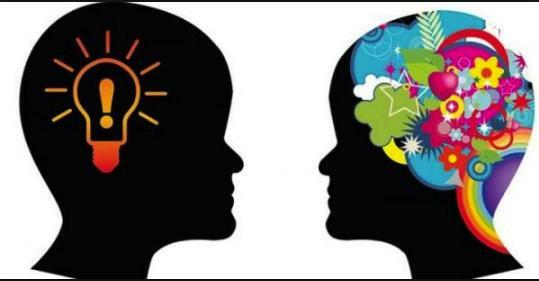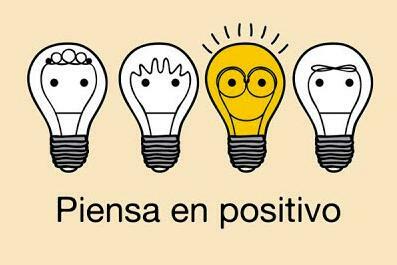
Another concept proposed to fill an explanatory gap in the reasons for behavior is style. Style is not conceived as a skill, but in terms of preferences for one or another way of acting (procedural strategies). This term was introduced by Allport from Jung's theory of psychological types, to refer to different types of personality and behavior. Since then, the definition has been changing, but it retains its essential quality; the style brings together a series of usual patterns or preferred ways of doing things, which are relatively stable over time and consistent across various types of activities. In this chapter we focus on cognitive style, which refers specifically to the habitual mode of process information and use cognitive resources, such as perception, memory, thinking, etc.
Index
- Cognitive styles dimensions
- Approaches to the integration of intelligence and personality
- Representative Constructs in Personality-Intelligence Integration
Cognitive styles dimensions.
Field Dependency / Independence (DIC) (Field Articulation)
Degree to which the organization of the perceptual field affects the perception of its components. Field-dependent subjects (PD) have difficulty locating and identifying the information they seek, since the rest of the components of the perceptual field (secondary) act as distractors from its main task. On the contrary, field independents (CI) know how to easily discriminate the relevant elements from the secondary ones. Later, DIC was extended to other areas of behavior, such as learning and memory, problem solving, social behavior, and activity.
Leveler / Sharpener (Range of equivalence) (Conceptual differentiation)
Degree to which differences or similarities are perceived in objects. Levelers tend to omit changes in stimuli, simplifying elements in memory. The result is that these subjects overgeneralize their observations, since they see the elements that compose them as similar. On the contrary, sharpeners find important differences between the elements of the situation, retaining it in memory in a very detailed way, so it is very organized and structured. As the individual matures, it is known that their level of differentiation increases, thus moving from a leveling style to a sharpening one. However, stylistic differences persist into adulthood and among experts, respectively. A test that evaluates this dimension is the free classification test (if the subject is a sharpener, he will form more groups than if he is a leveler, since he will find more differences)
Impulsivity / Reflexivity (I / R)
There are situations of uncertainty or ambiguity in which people must choose between doing a lot but at the risk of making mistakes (impulsive) or doing little and being more exact (reflective). I / R refers to the tendency to inhibit initial responses and to pay attention to them in order to assess their degree of precision. Unlike the equivalence range, the I / R is relatively stable over time. Between both groups of individuals there are personality differences; impulsives show less anxiety about making mistakes, show a more success orientation than to failure, have low performance standards, and less motivation for tasks that involve learn. The test most used to evaluate this dimension is the Family Figures Matching Test.
Visualizer / Verbalizer
Way in which the information is attended to and processed. The displays they rely to a greater extent on information transmitted visually and prefer to analyze information through graphics, drawings, etc. Verbalizers prefer to be guided by words read or heard to process information.
Visual / Haptic
Preference for processing information visually or tactilely (haptic). In general, adults show a greater preference for the visual style and children for the haptic.
Conceptual style (analytical-relational / Inferential-categorial)
It refers to the habitual way in which individuals conceptually categorize objects. Are two:
- analytical-descriptive, individuals focus their attention on the elements of objects, grouping them on the basis of common elements (eg, table and chair because they have legs).
- relational, individuals pay more attention to global objects, and groups them by adopting as criteria the functional relationships between objects (eg, table and chair because they serve to eat)
Serial / Holistic
Way in which attention is focused on the material being learned. Holistics process several elements at the same time and organize them in order to form a complex unit. Serialists analyze in detail all the elements of a problem, and order them according to a sequential criterion, that is, analyzing the information step by step. There are many other dimensions of cognitive styles, however many of the labels are different ways of referring to the same thing. Perhaps it is due to the poor communication between authors, which has resulted in a dispersion in terms of the number and variety of styles. Riding and Cheema group them into two basic dimensions:
- Holistic / Analytical (H / A). Designates the tendency to organize information globally (H) or by parts (A). Includes styles such as Field L / R, I / R, and Leveler / Leveler.
- Verbal / Images (V / I). It refers to the preference for representing information through figures or images, or verbally, in words. Covers styles such as Visualizer / Verbalizer and Visual / Hapic
Cognitive styles, intelligence and personality
No association possible between intelligence and cognitive styles, which justifies the existence of the cognitive style as something other than intelligence. The essential difference is that performance in all kinds of tasks that require cognitive skills is proportional to the intelligence of the subject (the higher the intelligence, the higher the performance). However, the effect of a cognitive style on performance will be positive or negative depending on the nature of the task (e.g., it will be more difficult for a viewer to work on tasks of type verbal)
With regard to personality, a moderate association can be justified, since cognitive styles explain individual differences in the performance of the cognitive processes, which are only one of the components of the personality structure. Cognitive styles must be located between cognitive abilities and personality traits, since they are those that define the idiosyncratic response of each individual based on situational demands.
Approaches to the integration of intelligence and personality.
The psychometric tradition aims to operationalize and evaluate representative constructs of the two main areas, personality and intelligence, and then explore the correlations between the two constructs derivatives. The formal study of the relationships between personality and intelligence can take place thanks to a series of measures, more or less reliable. Thus, the usual objective of intelligence tests has been to evaluate the maximum performance of the subjects (their ability), and the objective of the personality tests has been the typical performance (representative of the habitual way in which the individual behaves and performs in his life everyday)
The experimental approach It starts from precise theoretical models on the relationship between the two. Here, on the contrary, we start from specific hypotheses that guide the investigation, more precise measures are used (mental speed, etc.) and not global IQ scores. Thus, the focus of interest is on test solution styles, rather than overall performance. Based on these assumptions, we proceed to examine separate correlations between these IQ components. globally isolated experimentally and various aspects of the personality, under certain conditions or situations.
However, experimental models go beyond the analysis of simple cognitive processes. From the theory of classical cognitive science it is proposed that an analysis of the complex relationships between personality and intelligence requires, in addition to the consideration of simple cognitive processes and their biological bases, an explanation in terms of more complex processes such as personal goals, intentions, and efforts to adapt to demands external; what is called level of knowledge or semantic, inasmuch as it implies the intervention of the global knowledge that the world possesses, its interpretation, etc. (The study of the adaptive facets of intelligence is framed within this level of analysis, in where constructs such as practical intelligence, emotional intelligence, etc. make sense, which will be seen more go ahead)
Psychometric approach
From this analytical perspective, there have been several factors that have contributed to the limited success in detecting common aspects between personality and intelligence. Nature of the constructs. Factorial studies that include measures of personality and intelligence have shown signs of differentiation between them. Differentiation criteria between the personality and intelligence constructs:
- intelligence is seen as unidirectional (from little to much), while personality as bi-directional (bipolar; two extreme poles, e.g. introversion-extraversion)
- criterion for evaluating responses to tests. In the intelligence predominates a criterion of veracity (there is a more suitable level than another), while in the personality the direction and intensity of response is evaluated. c) Susceptibility to change. Intelligence is less susceptible to personal control, while personality possesses a degree of voluntary control.
- the instructions for evaluating them are different. Intelligence calls for "doing your best" and personality calls for "answering frankly" and "depending on the usual tendency to behave"
- the stability of cognitive traits (ability) over time and consistency across situations (of the same type ability) is usually something accepted, while in the case of personality it is assumed that it can undergo variations in both senses.
- the sources of error in the personality measures are greater than those of intelligence, so the reliability and validity is higher in the latter.
- the interpretation of the results is more ambiguous in the case of personality measures.
The differential aspects existing in the constructs of intelligence and personality contribute to the fact that, when correlation analysis between them is carried out, what is being done is to compare mental phenomena with different properties, both from the point of view of their intrinsic nature and the operationalization that the psychologists. This makes it difficult to detect global relationships between them.
Methodological difficulties.
Eysenk came to the same conclusion; general intelligence is not related to personality. This result is also derived from methodological difficulties, such as the use of unreliable instruments and statistical errors.
The few or no relationships between intelligence and personality they should be considered only at the construct level, with a psychometric-correlational methodology, and with the presence of methodological errors in the studies. But when studies carry out finer analyzes of those relationships, the results start to look quite different.
Evidence in support of the relationship between intelligence and personality from a psychometric perspective
In research on the relationships between intelligence and anxiety trait, only when anxious subjects are analyzed in situations of threat or stress, there are decreases in intellectual performance as a result of anxiety. Trait anxiety seems to be negatively related to current performance only in everyday life (academic performance, work performance, etc.). But it should be noted that in both types of relationships we are talking about intellectual performance (execution), not dispositional intellectual capacity or trait (IQ). As has already been said, global IQ is not related to personality, not even under specific test conditions such as those indicated.
Similarly, Extraversion-IntroversionAlthough it shows a poor correlation with intelligence (IQ), it does seem to be related to various aspects of intellectual performance. Distinction between peak and typical performance. One of the reasons that intelligence tests do not correlate significantly with personality is that intelligence is measured under the paradigm of performance maximum, when long-term performance in school and work (where the factors of personality are more relevant) takes place in a typical performance context.
Experimental-cognitive approach From this approach the emphasis falls on the processes (neural, cognitive-computational, or adaptive), compared to the interest in the structure (dimensions) of the psychometric approximations. Within this procedural perspective, various patterns of encounter between personality and intelligence have been found, at the three levels of analysis mentioned.
Neural process level. Do intelligence and personality share the same neural bases? It has been obtained that they seem to be related to different psychophysiological indices.
Level of cognitive processes. Are there processing components commonly associated with intelligence and personality factors? The traits of personality, like intelligence, are associated with various cognitive correlates (e.g., there is some evidence for the existence of a pattern in the Extraversion-Introversion dimension, and likewise, there is a cognitive pattern associated with the trait anxiety). Introverts are more like smart people in their greater ability to solve reflective problems, and outperform vigilance and memory long-term (compared to extroverts) Extroverts are similar to smart people in their greater ability to multitask simultaneous. They are also superior to introverts in short-term memory, in retrieving information from memory, and in resistance to distraction.
Thus, it can be concluded that the personality interacts with certain components of intelligence, jointly affecting various aspects of the cognitive performance. In this line, the cognitive psychology of information processing has provided important insights, but, yes, it is an incomplete explanatory model. Incomplete because it ignores an important element in performance, that is, the choice of strategies motivational factors on the part of the subject destined to face the demands of the tasks faces. When the use of strategies is associated with the choice made by the person based on a series of goals, the level appropriate analysis is knowledge or semantic, which has to do with the processes of adaptation to the demands of the environment external.
Adaptive level (of knowledge or semantic)
Do personality and intelligence converge when the individual strives to achieve adaptive goals and outcomes? They do converge, however, at the same time this interdependence between personality and intelligence is conditioned to a redefinition of the traditional concept of intelligence. This must now be conceived as the set of skills and knowledge available to the individual, thus such as the ability to use them in adapting to new situations and in achieving goals significant.
Thus, from the point of view of real-life problem solving, adaptive personality functioning and intelligent behavior appear to be conceived in similar terms. Indeed, functionally speaking, both involve maximizing the probability of achieving goals. This last point is important. If there is a key concept that characterizes different models of adaptive functioning, that is the goal. The goal is the component of the personality that makes it possible for it to be integrated with the intelligence. This supposes that the individual puts into operation, in an idiosyncratic way, all the resources available to her.
Representative constructs in personality-intelligence integration.
Within the level of analysis of the adaptive functioning behavior in everyday life, in the context of studying the relationships between personality and intelligence, a series of constructs have been emerging that try to describe and explain individual differences in the success that individuals have in managing daily difficulties, as well as in obtaining valued results or goals.
Justification of the need for the new constructs. The reason for the development of all these concepts is due to the fact that traditional intelligence tests abstract or analytical (IC) are not sufficient, by themselves, to explain the success or failure of the individual in his life daily.
[As early as 1920, Thorndike suggested that the skill Social it is an important component of intelligence, not captured by the tests that measure it. Subsequently, until the 1990s, psychologists gathered sufficient evidence that led them to conclude that IQ has little ability to predict success in daily life. Sternberg and Goleman reach the same conclusions, stating that these tests measure verbal and analytical ability, but not creativity or practical knowledge, factors that are equally important for solving everyday problems (statistically, IQ only contributes at most 20 percent hundred! of the determinants of success, it is necessary to explore which other characteristics account for the remaining 80 percent).
As already seen, Gardner, in his theory of multiple intelligences, points out that IQ tests are based on a limited notion of intelligence, leaving other abilities and skills more decisive for life than IQ out of study. Likewise, this author is committed to teaching more focused on the promotion of personal skills, and not only those of an academic nature (logical, analytical, abstract).
Let us remember that, among the various intelligence modalities that this author proposes, there are two (framed in the global concept of personal intelligences); interpersonal intelligence (ability to understand others and act accordingly) and intrapersonal intelligence (ability to understand oneself, and to behave in a way appropriate to one's needs, goals and abilities). Interest in the latter is reflected in research on the concept of emotional intelligence.
Finally, from other areas of psychology, it has also been concluded that intellectual abilities are insufficient to explain the why of the behavior and the level (quality and quantity) of the performance of that behavior. conduct. The concepts of motivation and self-regulation, ultimately, are those that connect the individual with the world, since they are those that direct behavior towards goals.
In this context, a series of psychological subsystems involved in the regulation of behavior, both affective and cognitive in nature, which predict the degree and quality of effort aimed at achieving results. Thus, there are several psychological and vital domains that can be considered, all of them part active and integral part of the personality-intelligence dynamic, and can be grouped into four major areas:
- the emotional world of the individual, especially the important role of understanding and managing one's own emotions and those of others. The relevant construct here is emotional intelligence.
- the effective application of the knowledge derived from the experience of the individual in his daily life or practical intelligence, for the solution of daily problems.
- The specifically interpersonal context, where the basic construct is social intelligence.
- On an integrating plane, there is the individual's need to regulate her behavior according to internal and external demands. It is the concept of self-regulation.
This article is merely informative, in Psychology-Online we do not have the power to make a diagnosis or recommend a treatment. We invite you to go to a psychologist to treat your particular case.
If you want to read more articles similar to Cognitive learning styles - Creativity, we recommend that you enter our category of Personality and Differential Psychology.


